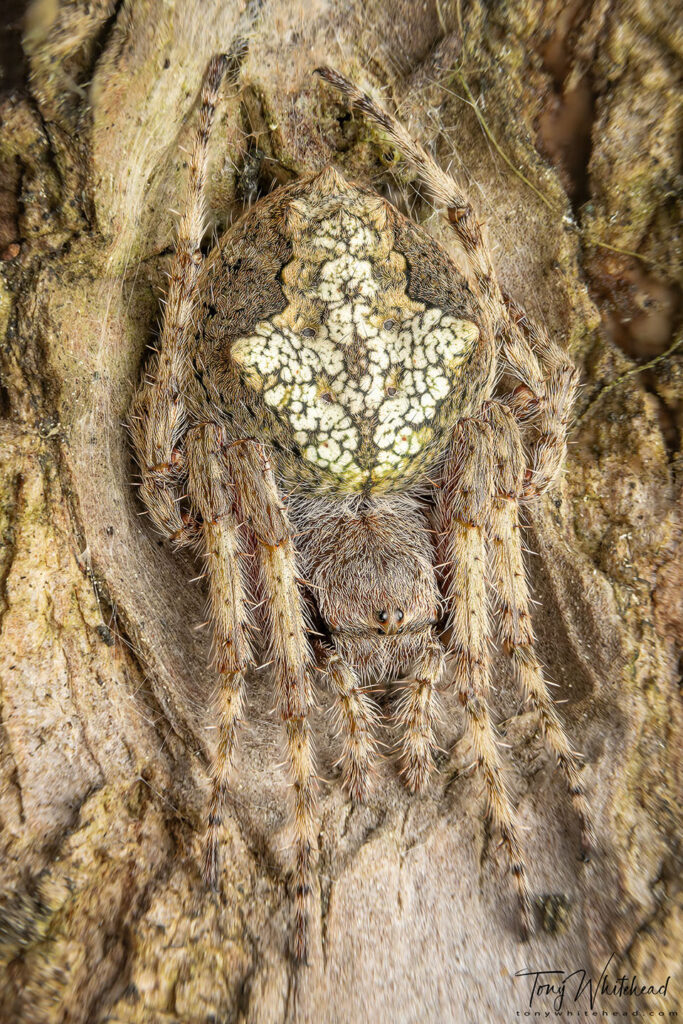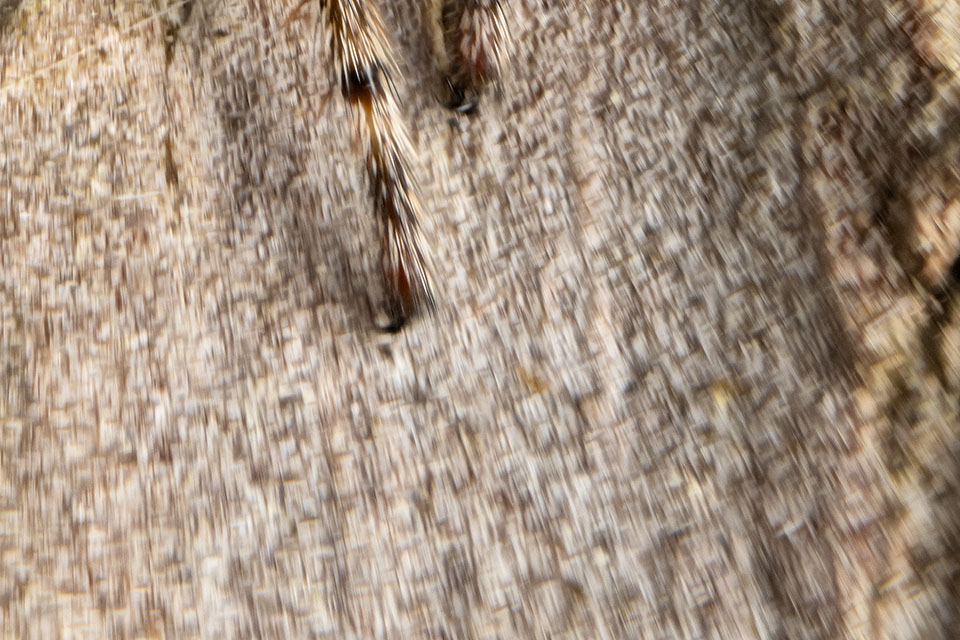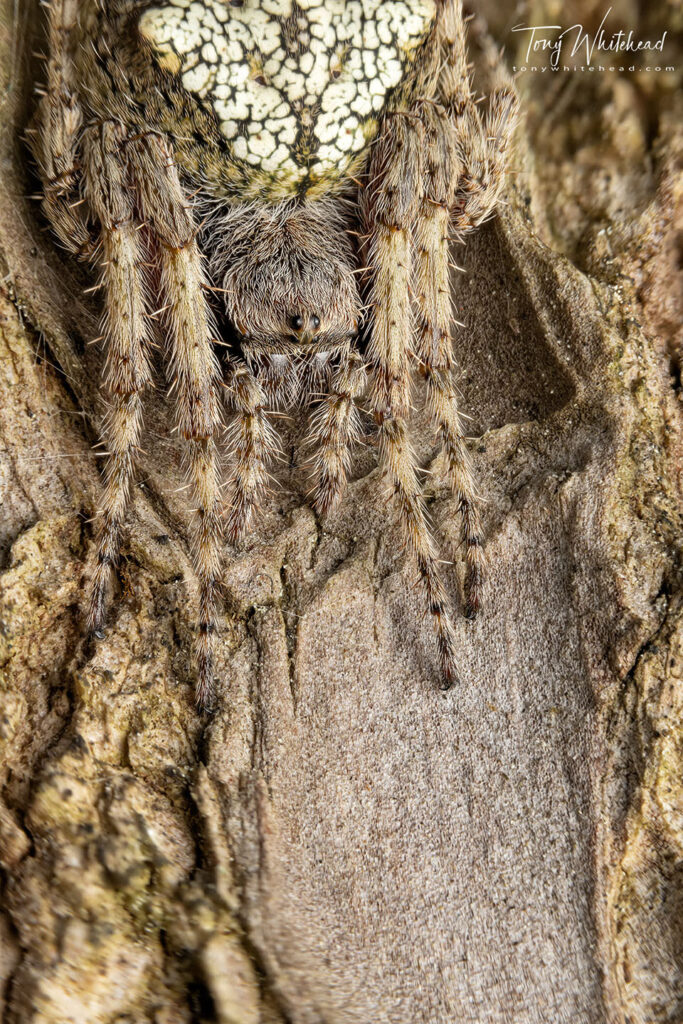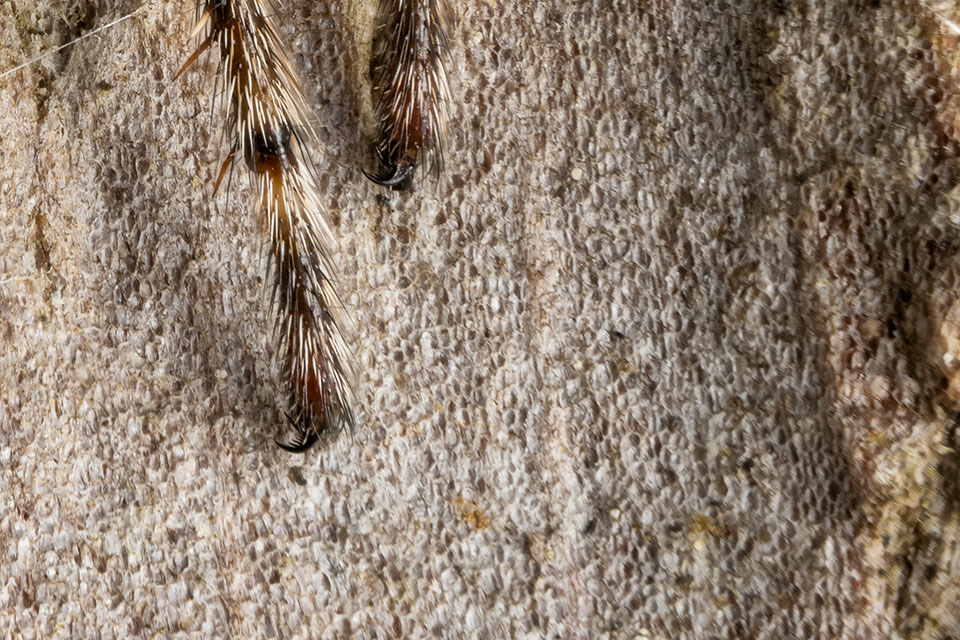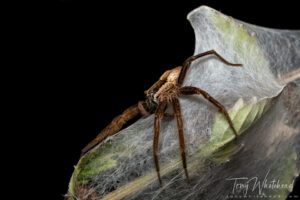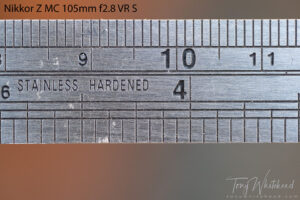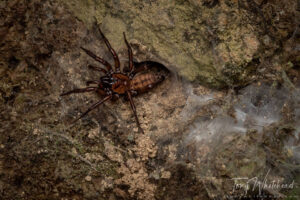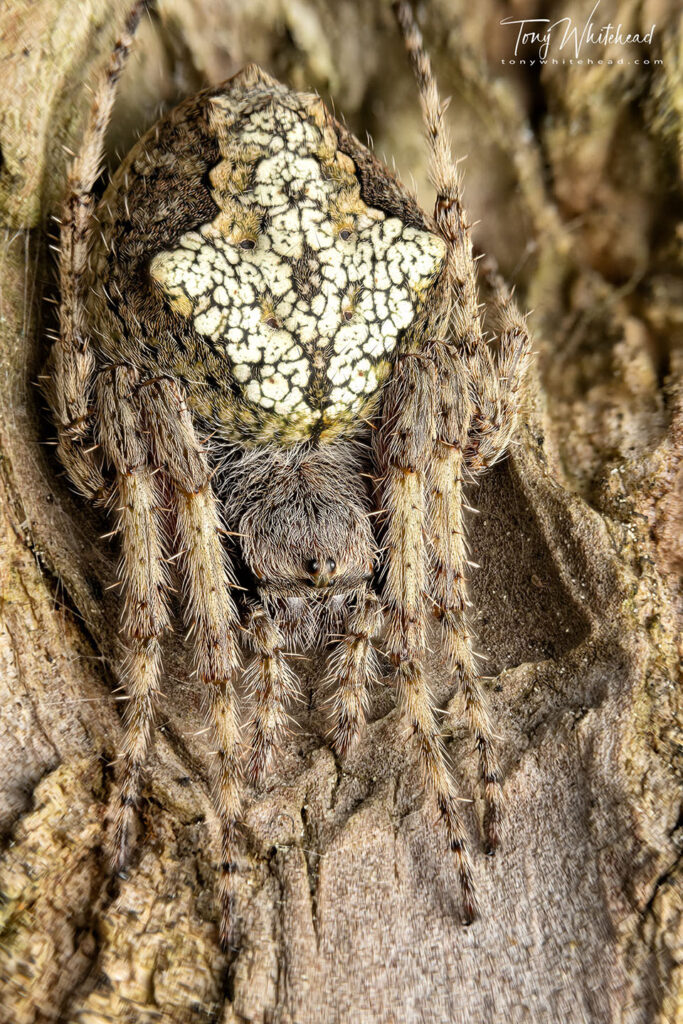
Following on from my first post on this image degradation with extension tubes issue, I have had a chance to compare the effect of in-camera focus shift stacks with stacks shot by moving the camera on a macro rail. As I mentioned in the initial post, in-camera stacks change focus incrementally and this alters the magnification between shots slightly. When assembled in Helicon Focus, the software applies adjustments for this. I felt that these adjustments may be more marked peripherally and what was introducing some artifact that was causing the image degradation.
Focus stacks shot using a macro rail keep focus and thus magnification constant and the rig is just incrementally advanced through the image to achieve sharply focused slices at different points of the subject. As can be seen from the top image this did not solve the peripheral image degradation problem. It is arguably slightly less marked than in the in-camera focus stack shown below but still gives unusable definition at the edges.
A crop from the top image shows poor sharpness of the hook at the end of the spider leg.
Placing the subject of interest more centrally in the frame allows far better sharpness and detail preservation.
Crop from above image showing detail of the hooks and comb at spider leg tip.
In summary this issue with using Viltrox extension tubes with the Nikkor Z 105mm f2.8 MC S lens seems to be related to the lens/extension tube combination rather than an artifact introduced by in-camera focus stacks and Helicon Focus. My conclusion from the first post stands – I will limit extension tube use to those occasion when I need more “magnification” than I can achieve with the lens alone and cropping. When I use tubes I will accept that I will need to crop out the periphery of the image anyway. The qualification again is that this is a worst case scenario using maximum extension of 36mm. The 12mm and 24mm tubes alone will likely cause less of an issue but I have not yet tested this adequately.
